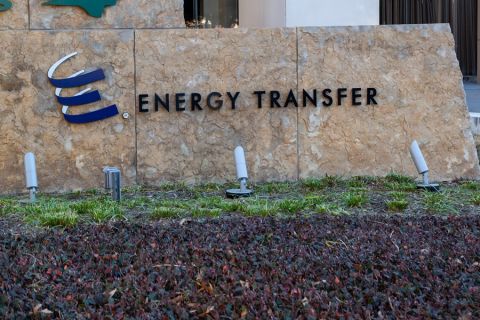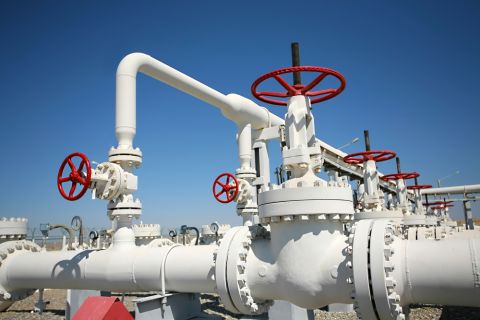Some key stats from Diamondback Energy’s two Midland Basin bolt-on deals: 83,000 net acres; 448 new net drilling locations; and about two years.
Roughly 24 months is the incremental inventory life that $3.3 billion in cash and stock buys in the Permian Basin.
Diamondback on Nov. 16 announced it would buy Lario Permian LLC on Nov. 16 in a cash-and-stock transaction valued at $1.55 billion. That follows an Oct. 11 announced deal to buy FireBird Energy LLC for $1.75 billion.
By leveraging its attractive stock—along with $1.6 billion cash—Diamondback continues to consolidate private operators in the Midland Basin. The company expects to generate unlevered free cash flow (FCF) of $570 million from its Midland bolt-ons.
In both deals, Diamondback will immediately tap the brakes on drilling activity, reducing cumulative rigs on the Lario and FireBird positions from five rigs to two to preserve inventory.
David Deckelbaum, an analyst at Cowen, told Hart Energy that Lario’s drilling program would have depleted its inventory in about four years. At Diamondback’s pace, that inventory will stretch to six years.
Similarly, FireBird’s inventory stretches out to 12 years in drilling activity as Diamondback will reduce rigs operated there to three from one.
“Overall, total to FANG [Diamondback], it’s about two total incremental years of company-wide inventory,” Deckelbaum said.
Deckelbaum also noted that Diamondback has again found a clear financial arbitrage in its acquisition. The company is paying $60,000 per flow boe/d and 3.3x 2023E EBITDA versus its prevailing multiple of $83,000 per boe/d and 5.2x EBITDA.
“We expect the deal to remain FCF/share accretive above $73/bbl,” Deckelbaum said.
When combined with the pending FireBird acquisition, Diamondback will grow its Midland Basin footprint by approximately 83,000 net acres. Additionally, the deal will add 500 high-quality drilling opportunities that Diamondback Chairman and CEO Travis Stice said “compete for capital with our current development plan and increase our 2023 production profile by approximately 37,000 bbl/d of oil (50,000 boe/d).”
FireBird and Lario Transactions At-a-Glance |
|||
| FireBird | Lario | Combined | |
| Value ($B): | $1.75 | $1.55 | $3.3 |
| Cash ($MM): | $775 | $850 | $1,630 |
| Shares (MM): | 5.86 | 4.18 | 10.04 |
| Net acres: | 68,000 | 15,000 | 83,000 |
| Locations (gross / net): | 353 / 316 | 154 / 132 | 507 / 448 |
| 2023E Production oil (bbl/d): | 19,000 | 18,000 | 37,000 |
| 2023E Production (boe/d): | 25,000 | 25,000 | 50,000 |
| Incremental capex ($MM): | $250 | $150 | $400 |
Large-cap equity advantage
The Lario acquisition and other similar deals of late demonstrate the ability of large-cap public companies to outcompete smaller E&Ps.
As with other recent deals by large-cap public E&Ps for private operators, Diamondback is leveraging its considerable balance sheet strength and equity performance to overrun smaller public competitors.
“Large-cap E&Ps focused on oil like Diamondback, as well as other big buyers from 2022 like Marathon Oil and Devon Energy, are trading at an average of 5x EBITDA and a 14% yield on free cash flow whereas small-cap companies are trading at just 3x EBITDA and their stock price implies a yield of 20% on free cash flow,” said Andrew Dittmar, director at Enverus. “That puts those smaller companies at a significant competitive disadvantage when bidding on deals because they cannot offer the same value as larger companies without diluting shareholders.”
That disadvantage is further heightened because in many cases smaller companies are “much more in need of the inventory that is included in these acquisitions,” he added.
But such acquisitions are also the lifeblood of Diamondback. As President and CFO Kaes Van’t Hof said at Hart Energy’s Executive Oil Conference in Midland, Texas, on Nov. 16, Diamondback is built to acquire and exploit assets. “What we’re not good at is making big bets on exploration,” he said.
Lario bolt-on details
Dittmar said the Lario acquisition “walks the line of staying accretive to Diamondback’s 2023 EBITDA multiple and free cash flow yield while adding inventory that is immediately competitive in its portfolio.”
Lario’s acreage adds an estimated 20-25 DUCs to be transferred at closing on Jan. 31.
In contrast to FireBird, the purchase from Lario is more immediately accretive to free cash flow but has less runway for undeveloped locations, Dittmar said.
“The Lario acreage is also more centrally located within the core development fairway of the Midland Basin relative to FireBird but scattered whereas the FireBird land was nearly in one contiguous block,” he said.
The Lario bolt-on brings 15,000 net acres in Midland and Martin counties, Texas, that are projected to average 18,000 bbl/d of oil next year, said Mark A. Lear, senior research analyst at Piper Sandler & Co.
Lario Permian Key Metrics |
|
| Net acres: | 15,000 |
| HBP: | 92% |
| Estimated 2023 production (bbl/d oil / boe/d): | 18,000 / 25,000 |
| Estimated horizontal locations (gross / net): | 154 / 132 |
| Average lateral length (ft): | > 9,400 |
| Estimated close: | Jan. 31, 2023 |
| Effective date: | Nov. 1, 2022 |
Lario Permian, the subsidiary of 95-year-old Lario Oil & Gas Co., has delivered “fairly consistent well performance” across its core Midland asset base, Lear wrote in a Nov. 16 report. Piper Sandler estimates Lario will add 132 net locations with an average lateral length of 9,400 ft in the Wolfcamp A and B, Lower and Middle Spraberry and Joe Mill formations.
“Upstream deal activity has been picking up pace in 2H22, and investors have applauded companies taking advantage of arbitrage opportunities to add [cash flow] and inventory runway relatively inexpensively,” Lear said.
Jeoffrey Lambujon, an analyst at Tudor, Pickering, Holt & Co., said the deal adds roughly $150 million of capex to Diamondback’s ledger in 2023 for an estimated annual spend of $2.5 billion to $2.6 billion.
The deal will be funded with 4.18 million Diamondback shares and $850 million of cash. Diamondback said that the cash costs will net to $775 million because of cash flows it accumulates between the effective date of Nov. 1 and the expected close of Jan. 31.
“On the margin, we view the deal as positive for macro / industry with more private operatorship taken off the board and FANG’s plans including dropping the 2 rigs currently running on the acreage down to <1 in 2023,” Lambujon wrote in a Nov. 17 report.
Recommended Reading
Energy Transfer Announces Cash Distribution on Series I Units
2024-04-22 - Energy Transfer’s distribution will be payable May 15 to Series I unitholders of record by May 1.
Balticconnector Gas Pipeline Back in Operation After Damage
2024-04-22 - The Balticconnector subsea gas link between Estonia and Finland was severely damaged in October, hurting energy security and raising alarm bells in the wider region.
Wayangankar: Golden Era for US Natural Gas Storage – Version 2.0
2024-04-19 - While the current resurgence in gas storage is reminiscent of the 2000s —an era that saw ~400 Bcf of storage capacity additions — the market drivers providing the tailwinds today are drastically different from that cycle.
Ozark Gas Transmission’s Pipeline Supply Access Project in Service
2024-04-18 - Black Bear Transmission’s subsidiary Ozark Gas Transmission placed its supply access project in service on April 8, providing increased gas supply reliability for Ozark shippers.




